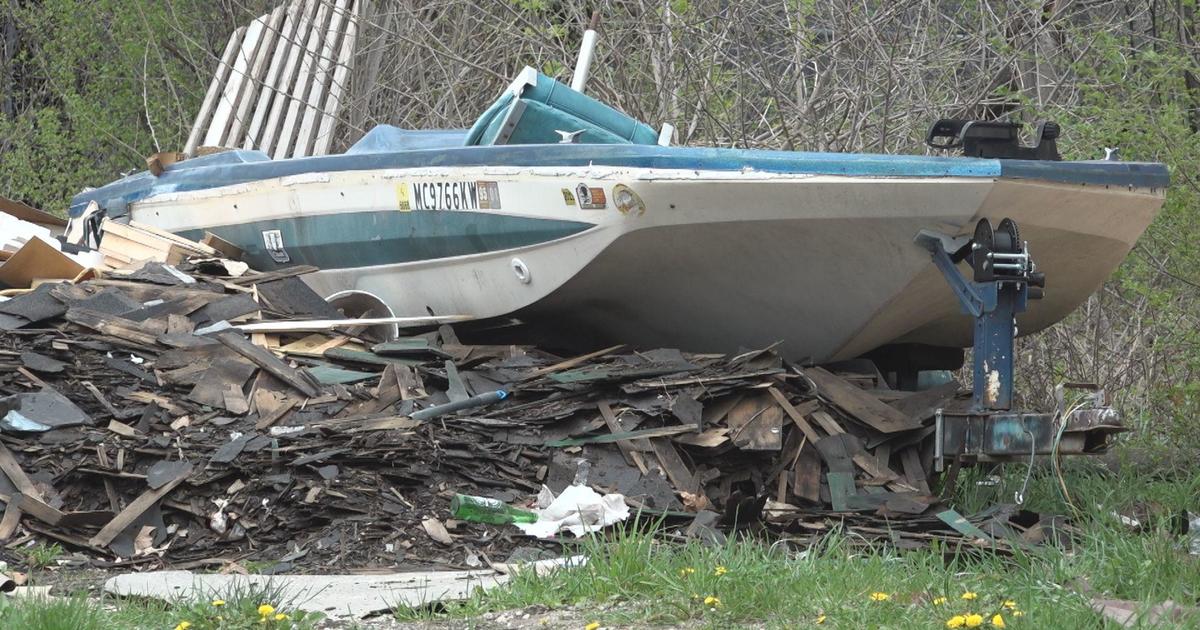EMU Researcher Wins NASA Award To Study Martian Upper Atmosphere
YPSILANTI -- Mars, that orange-red fourth-rock-from-the-sun pockmarked by craters, is the latest 'rock star' being studied by scientists, now that the National Aeronautics and Space Administration's new Curiosity Mars rover has landed on the planet.
While the rover will spend at least two years on Mars, searching for clues that the planet may have been suitable for microbes, scientists like David Pawlowski of Eastern Michigan University are honing their research to unlock some of Mars' other mysteries.
Pawlowski, an assistant professor of physics and astronomy at Eastern Michigan, recently won a $345,418 grant from NASA for a project that examines the Martian atmosphere. It is the first NASA grant directly funded to Eastern Michigan since 1997.
His three-year project, "Understanding the Time-Dependent Responses of the Martian Upper Atmosphere to Solar Flares and Dust Storms," promises to provide an in-depth, quantitative understanding of a planet that can't protect itself from solar wind because it no longer has a shield, or global magnetic field. The result: a loss of atmosphere.
 "While there have been a few studies that have examined the behavior of the Martian upper atmosphere during solar flares and dust storms, they've been limited in scope," Pawlowski said. "Those studies have only focused on the magnitude of the disturbances. They haven't addressed the behavior of the underlying physical processes."
"While there have been a few studies that have examined the behavior of the Martian upper atmosphere during solar flares and dust storms, they've been limited in scope," Pawlowski said. "Those studies have only focused on the magnitude of the disturbances. They haven't addressed the behavior of the underlying physical processes."
Solar flares, produced by the sun, are intense bursts of radiation developing from the release of magnetic energy. Flares are considered to be one of our solar system's largest explosive events.
Dust storms are whirlwinds made up of airborne dust particles primarily from surface soils or that are injected into the atmosphere.
"Scientists know that dust in the lower atmosphere causes changes to the state of the upper atmosphere, but we don't understand the details," Pawlowski said. "Compared to the current understanding of how the Earth's upper atmosphere behaves due to various external forces, we are 'well behind' in our current understanding of Mars."
Pawlowski's research will focus on the upper atmosphere, or space, where some spacecraft 'hang out,' he said.
His new grant-funded study will examine four areas:
* What global effects do solar flares and dust storms have on the densities, temperatures and winds on Mars?
* How long does Mars' ionosphere and thermosphere remain disturbed after a solar flare? The ionosphere is the part of the atmosphere affected by solar radiation. The thermosphere is the outermost layer of the atmosphere.
* How does the spatial evolution or development of a dust storm affect Mars' upper atmospheric response?
* How does dust distribution affect the system's response to a solar flare event?
"This project is a 50-50 split between using a computer model that I helped develop that runs on a NASA super computer, and using data obtained from NASA spacecraft," he said. "I log onto that computer from EMU and am able to do very sophisticated calculations in a fraction of the time that it would take to do so locally."
Pawlowski will work with observations taken throughout the past solar cycle from several instruments, in combination with a 3-D global Mars whole atmosphere model. This analysis, he says, will provide important insights into how the upper atmosphere is controlled externally by solar forcing, as well as from below.
"I'm curious as to how these variables affect Mars and how conditions in space change over time," said Pawlowski, who has a doctorate in space physics. "In other words, I'm curious about Martian space weather. In many ways, it's different from the space weather here at earth. By studying these processes on earth and looking at similar processes at other planets, we can learn a lot about both systems."
Ultimately Pawlowski's goal is to provide an in-depth, quantitative understanding of the time-dependent behavior of the Mars upper atmospheric system in response to what scientists call extreme solar and dust forcing.



